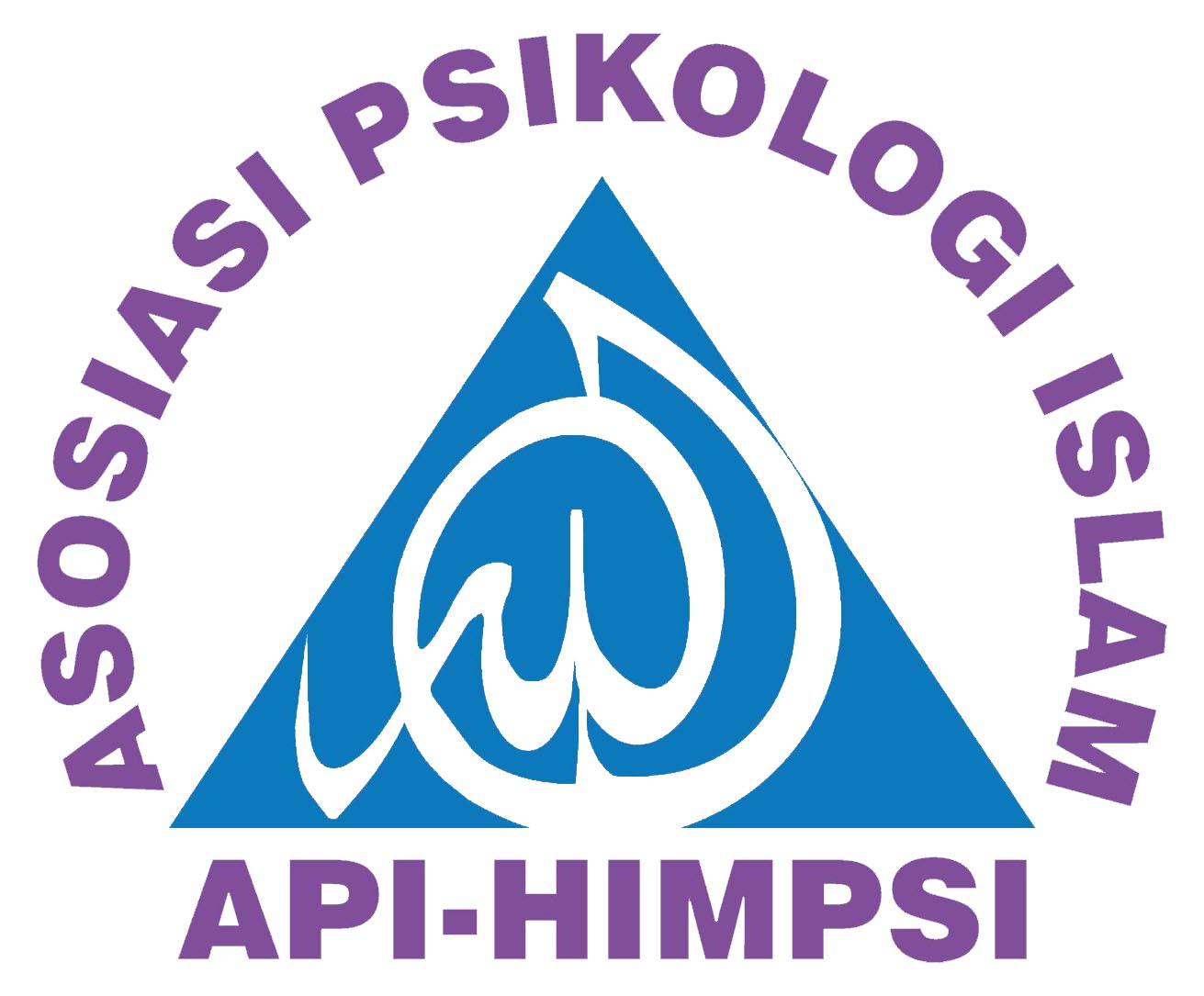Al-Haya’ Instrument Construction: Shame Measurement Based on the Islamic Concept
DOI:
https://doi.org/10.15575/jpib.v4i1.10388Keywords:
Al-Haya’, Shame, Self-controlAbstract
References
Al-Muqaddam, M. I. (2008). Fikih malu (A. F. Ilyas & M. Anas, Trans.). Nakhlah Pustaka.
Albu, G. (2014). Shame, a landmark of education or a sign of its weaknesses? Case study. Procedia - Social and Behavioral Sciences, 127(2008), 83–87. https://doi.org/10.1016/j.sbspro.2014.03.217
Baumeister, R., Vohs, K., & Zhang, L. (2007). How emotion shapes behavior: Feedback, anticipation, and reflection, rather than direct causation. Personality and Social Psychology Review, 11, 167–203. https://doi.org/10.1177/1088868307301033
Budiarto, Y. (2020). Rasa malu relasional: Kritik terhadap konstruksi rasa malu psikologi barat. In A. F. Helmi (Ed.), Psikologi untuk Indonesia: Isu isu terkini relasi sosial dari intrapersonal hingga interorganisasi (pp. 20–42). Gadjah Mada University Press.
Cohen, T. R., Wolf, S. T., Panter, A. T., & Insko, C. A. (2011). Introducing the GASP scale: A new measure of guilt and shame proneness. Journal of Personality and Social Psychology, 100(5), 947–966. https://doi.org/10.1037/a0022641
Collins, E. F., & Bahar, E. (2000). To know shame: Malu and its uses in Malay societies. Crossroads: An Interdisciplinary Journal of Southeast Asian Studies, 14(1), 35–69.
Dancey, C. P., & Reidy, J. (2014). Statistics without maths for psychology: Using spss for windows. Prentice Hall.
Dempsey, H. L. (2017). A comparison of the social-adaptive perspective and functionalist perspective on guilt and shame. Behavioral Sciences, 7(4), 1–19. https://doi.org/10.3390/bs7040083
Duckworth, A. L., & Kern, M. L. (2011). A meta-analysis of the convergent validity of self-control measures. Journal of research in personality, 45(3), 259–268. https://doi.org/10.1016/j.jrp.2011.02.004
Farmawati, C., & Hidayati, N. (2019). Penyusunan dan pengembangan alat ukur islamic personality scale (IPS). JPIB: Jurnal Psikologi Islam dan Budaya, 2(1), 19–30. https://doi.org/10.15575/jpib.v2i1.4318
Field, A. P. (2013). Discovering statistics using IBM SPSS statistics (4th edition). Sage.
Furukawa, E., Tangney, J., & Higashibara, F. (2012). Cross-cultural continuities and discontinuities in shame, guilt, and pride: A study of children residing in Japan, Korea and the USA. Self and Identity, 11(1), 90–113. https://doi.org/10.1080/15298868.2010.512748
Hefni, A. (2015). Jika tidak malu berbuatlah semaumu!, Seni mengontrol diri dengan menumbuhkan rasa malu. Diva Press.
Lajnah Pentashihan Mushaf Al-Qur’an (LPMQ). (2019). Q.S Al-Ahzab (33): 53. Qur’an Kemenag. https://quran.kemenag.go.id/sura/33
Marliani, R., Ramdani, Z., & Imran, J. M. H. (2019). Validation of happiness scale convergence in santri through multi-trait multi-method analysis. Psikohumaniora: Jurnal Penelitian Psikologi, 4(2), 143–156. https://doi.org/10.21580/pjpp.v4i2.3670
Pyle, M. B. (2011). Culture and regulation: Examining collectivism and individualism as predictors of self-control. Florida State University.
Ramdani, Z., Supriyatin, T., & Susanti, S. (2018). Perumusan dan pengujian instrumen alat ukur kesabaran sebagai bentuk coping strategy. JPIB: Jurnal Psikologi Islam dan Budaya, 1(2), 97–106. https://doi.org/10.15575/jpib.v1i2.2955
Rifani, R., Suryanto, S., & Suminar, D. R. (2020). Analisis faktor eksploratori dan konfirmatori untuk validasi skala lingkungan makan terstruktur pada ibu bekerja. Psympathic : Jurnal Ilmiah Psikologi, 7(2), 327–340. https://doi.org/10.15575/psy.v7i2.9890
Sumintono, B., & Widhiarso, W. (2014). Aplikasi model rasch untuk penelitian ilmu-ilmu sosial (Revisi, Issue November). Trim Komunikata Publishing House.
Sumintono, B., & Widhiarso, W. (2015). Aplikasi pemodelan RASCH pada assessment pendidikan (Issue October). Trim Komunikata Publishing House.
Tangney, J. P., Baumeister, R. F., & Boone, A. L. (2004). High self-control predicts good adjustment, less pathology, better grades, and interpersonal success. Journal of Personality, 72(2), 271–324. https://doi.org/10.1111/j.0022-3506.2004.00263.x
Tangney, J. P., Stuewig, J., & Martinez, A. G. (2014). Two faces of shame: The roles of shame and guilt in predicting recidivism. Psychological Science, 25(3), 799–805. https://doi.org/10.1177/0956797613508790
Tangney, J. P., & Tracy, J. L. (2012). Self-conscious emotions. In M. Leary & J. P. Tangney (Eds.), Handbook of self and identity (Second edition), (pp. 446–478). Guilford Press.
Unger, A., Bi, C., Xiao, Y. Y., & Ybarra, O. (2016). The revising of the Tangney self-control scale for Chinese students. PsyCh Journal, 5(2), 101–116. https://doi.org/10.1002/pchj.128
Wong, Y. J., Kim, B. S. K., Nguyen, C. P., Cheng, J. K. Y., & Saw, A. (2014). The interpersonal shame inventory for Asian Americans: Scale development and psychometric properties. Journal of Counseling Psychology, 61(1), 119–132. https://doi.org/10.1037/a0034681
Downloads
Additional Files
Published
Issue
Section
Citation Check
License
Authors who publish with this journal agree to the following terms:
- Authors retain copyright and grant the journal right of first publication with the work simultaneously licensed under a Creative Commons Attribution License that allows others to share the work with an acknowledgment of the work's authorship and initial publication in this journal.
- Authors are able to enter into separate, additional contractual arrangements for the non-exclusive distribution of the journal's published version of the work (e.g., post it to an institutional repository or publish it in a book), with an acknowledgment of its initial publication in this journal.
- Authors are permitted and encouraged to post their work online (e.g., in institutional repositories or on their website) prior to and during the submission process, as it can lead to productive exchanges, as well as earlier and greater citation of published work (See The Effect of Open Access).






